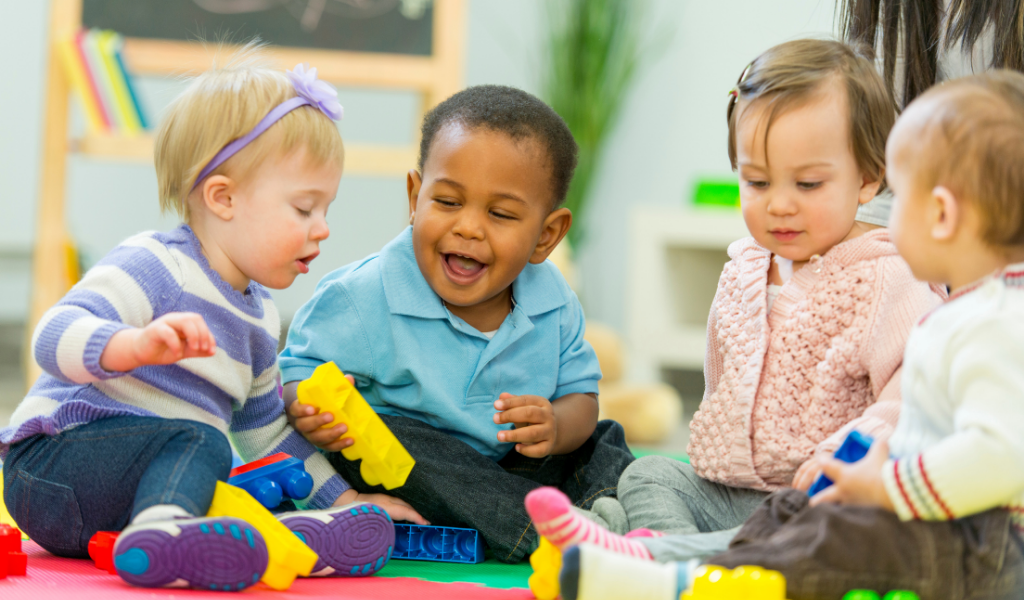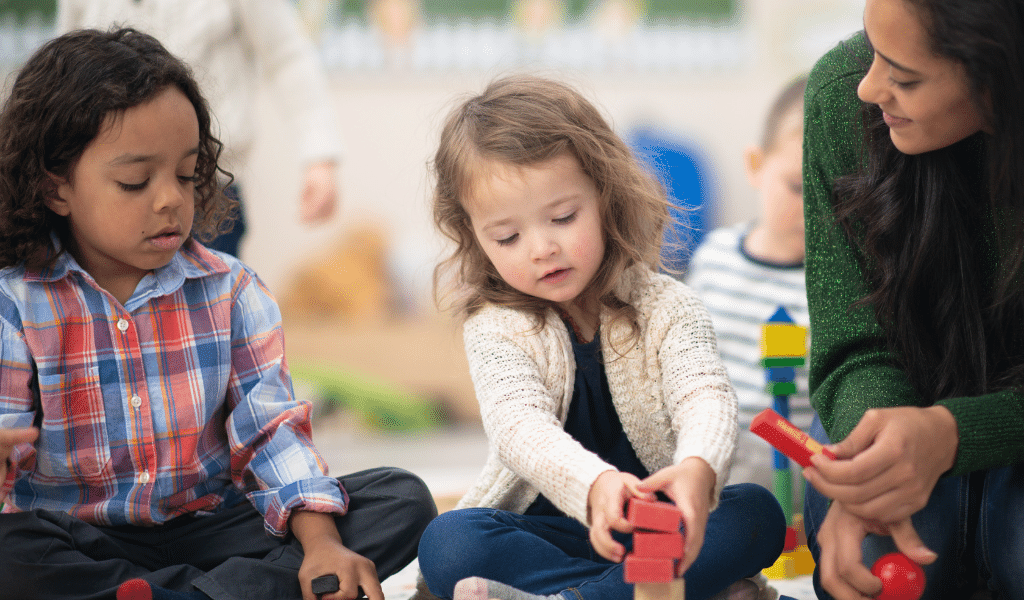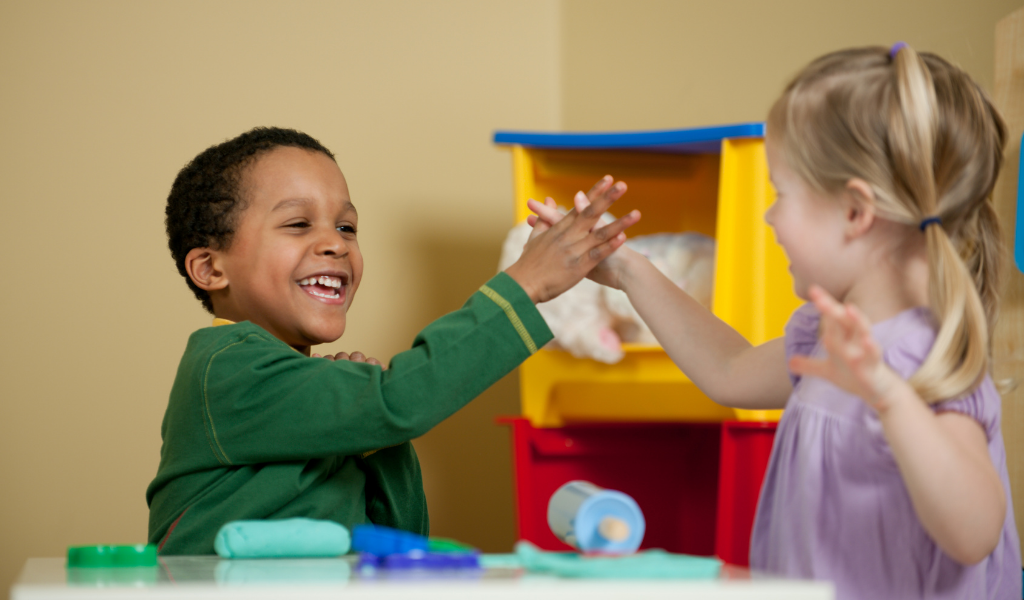In preparing for a recent Kinderly Learn webinar, I came across an intriguing phenomenon. Many providers had implemented the practice of ‘doorstep handovers’ as a result of lockdown restrictions last spring. Although the restrictions relaxed over the summer, doorstep handovers continued and many providers say they intend to make this a permanent policy change.
Doorstep handovers it seems, have been a surprising success. So why have they proved so popular? I surveyed a group of practitioners and parents for their views and asked parents what their children thought. This is what they said:
Key benefits of doorstep handovers for children
- Feel calmer and more relaxed
- Less confused e.g. no uncertainty over how long parents are staying
- Clear demarcation between home and setting: crossing the threshold
- Feel safe and secure, confident
- Enjoy the opportunity to be more independent
Key benefits for parents
- See child going in happy and leaving happy
- Handovers are smoother and calmer, fewer meltdowns
- Find it easier to leave, fewer protracted goodbyes
- Quicker so less likely to be late for work
- Feel less anxious about leaving child, calm child = calm parent
- Children seem less ‘clingy’

Key benefits for practitioners
- Handovers are quicker so less intrusive on the daily routines
- Improved security as arrivals are generally staggered, with fewer people entering and leaving the building; no one ‘clogging up’ the entrance
- Children arrive more relaxed, ready to play and learn straight away
- Children’s behaviour at handover is improved, no ‘flash points’ and fewer ‘wobbles’
- Very little separation anxiety observed
- Children are more independent: hang up their own bags and coats (beneficial for when they start school)
- Practitioners can focus on the children and welcoming them in, rather than trying to talk with parents at the same time
- Settling in is generally smoother: children seem to make a stronger attachment to their Key Person sooner and settle more quickly than previously

Why does this seem to be working so well?
- Quicker handovers mean less time for anyone to become anxious: no protracted goodbyes
- Staggering drop-offs supports children who found the experience of everyone arriving at once overwhelming
- Reduction in stress levels due to handover occurring outdoors which can be a calming, less intimidating environment
- Less uncertainty with clear expectations from everyone over what is going to happen:
- Parents are letting their child know they are leaving and saying goodbye, no leaving secretively while the child is playing
- Children are not constantly wondering when/if their parent is going to leave
- The stress of not knowing when the parent was leaving was worse for some children than their actual departure
- Children are not feeding on parents’ anxiety and vice versa
- The children are able to take ownership of the transition process: when to go through the door, hang up their bags etc.
- The system conveys the message to the children that their parents trust the people they are leaving them with and so it is a safe place to be
- Children are resilient in coping with change when well prepared for what to expect

At face value, it appears to be a win-win situation but has this come at a cost?
Two key arguments against doorstep handovers were discussed:
- The possible impact on children’s emotional wellbeing
- Developing parent-setting relationships
The possible impact on children’s emotional wellbeing
Just because a child seems okay and is not upset or crying, how do we know this is the case? Are they in reality, deeply distressed, but hiding their feelings?
One practitioner pointed out that although a child may appear settled, there may be emotional trauma occurring that is invisible in the short-term which could have a long-term impact. Another example given was of a child who appeared to be transitioning into the setting happily but was masking ‘like crazy’ and letting out all her pent-up emotions and feelings when she got home. Children are resilient but we do not know the effect the current crisis will have on them.
“When children face separation or loss, they sometimes withdraw into a compliant state and it can be hard for the adults around them to remain open to what is happening for them at a deeper level… This ‘blind spot’ is particularly prevalent where the adults themselves are dealing with huge amounts of stress and anxiety…”
(http://www.thechildrenwerefine.co.uk/background.html)
Could this situation arise from doorstep handovers? For some children, this could certainly be the case and practitioners must be alert to the possibility, not assume ‘they are fine’.

Developing parent-setting relationships
The other main disadvantage of doorstep handovers cited was the impact these are having on interactions between practitioners and parents. Both groups identified the practice as a barrier to developing the strong, positive relationship needed to work together in partnership effectively.
Some of the comments included:
- Feeling distanced from the parents, don’t know families as well, impersonal
- Practitioners less likely to be aware of potential safeguarding and child protection concerns, less aware of factors from home
- Detrimental to the care of the child, no privacy or shelter so difficult to discuss something sensitive or confidential
- Parents miss being involved in the setting and the opportunity to have an informal chat
- Parents less likely to open up and ask for help, less inclined to share problems or concerns
- Parents anxious about how their child is managing their day but feel unable to discuss with staff
- Children unable to share their day and environment with parents, parents unable to see the place their children spend so much time
Going forward
Most of the settings surveyed stated their intention to continue with doorstep handovers, even when the pandemic restrictions are lifted, as they felt the positives far outweighed the negatives.
Given this likelihood, what might be done to mitigate the concerns around wellbeing and relationships?

Wellbeing and transitions
Settings should review their settling-in policy and procedures. What can they do to ensure that the child is well prepared for the transition, including being familiar with their key person and the setting environment before they encounter their first handover? Ideas include:
- Sending out photobooks to new families that show pictures of the setting and staff, with information about what to expect: the daily routines
- Find out as much as possible about the child before they join: likes, dislikes, favourite play activities and toys, family composition, how they sleep, eat, and other routines, how they like to be comforted
- Visit the child in their home if possible or consider a digital visit if not
- Share a video tour of the setting and videos of staff introducing themselves to the children
- Hold video calls between the child and their new key person
- Invite new children to a digital group story session with their key person
- Have garden or other outdoor opportunities for children and parents to visit the setting and meet the key person, arrange inside tours following Covid-safe procedures (e.g. when the setting is closed, adults wear masks, strict handwashing)
- Invite the parent to settle their child if they are frequently becoming upset at handover. This IS permitted under lockdown rules
Once children have arrived in the setting it is vital that practitioners assess their emotional wellbeing over time, not accepting the smile on arrival at face value. Get to know the children well, observe them at different times of the day, note their social interactions, look at how they behave at the end of the day, and find time to talk to parents about their children’s behaviour and any concerns at home. Keep the bigger picture in mind and be ready to support those children who are struggling and not ‘fine’ after all. Consider using the Leuven Scales of Wellbeing and Involvement to assist in assessing children’s happiness and engagement.
Ensure children have a place to put their things to reinforce their sense of belonging. They should be allowed to continue to bring any comforters from home and have unrestricted access to these. Provide children with a ‘safe space’ to go to when they feel sad, where they can perhaps look at a picture of their family, cuddle their comforter and have a hug from their key person.

Building parent relationships
Building strong parent-setting relationships is harder with doorstep handovers but can still be managed. Here are a few ideas:
- Invite parents to regular digital chats about their child and create opportunities for a face to face conversation where necessary or requested
- Use digital communication methods to keep parents updated about their child’s day, environment, experiences, development and progress and vice versa
- Kinderly Together uses ‘Wow Moments’ and observations to help with this
- Encourage children to get involved in choosing and sending updates from both setting and home
- Provide activity ideas that children can do at home. Photos or videos of these can then be shared back to the setting
- Kinderly Together users ‘Postcards from Home’ for this. It also provides subscribers with a themed ‘Weekly Activity Bulletin’ with lots of EYFS-structured activities that can easily be shared with parents
- Stagger the times of handovers so there IS time for a quick chat before the next child arrives if needed
- Once restrictions are lifted create opportunities for parents to visit the setting and be involved.
- Hold stay and play sessions. Offer these at different times to facilitate access for working parents
- Have parent’s evenings or daily appointment opportunities for parents to talk to staff once their child has arrived or before collection.
- Consider doorstep handovers in the morning but indoor collections at the end of the session.
- If not practical on a daily basis could this be operated as a rota, one day a week for each child perhaps?
- Consult with parents to see what they would help them most.
Further reading
https://www.teachearlyyears.com/a-unique-child/view/supporting-transitions-in-the-early-years
https://www.pacey.org.uk/news-and-views/pacey-blog/2016/march-2016/secure-attachment-the-importance-of-responsive-re/
https://www.health.harvard.edu/staying-healthy/understanding-the-stress-response
Two Year Goes to Hospital excerpt
About the author

Rebecca Martland has 20 years’ experience in the early years sector: as a childminder, she has received an Outstanding grade from Ofsted for four consecutive inspections. She is an Early Years consultant, trainer, author and Nursery World Awards judge. She is also a qualified teacher and Early Years Professional.







